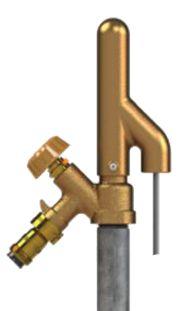
















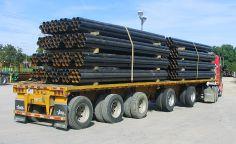






Annex Publishing & Printing Inc. P.O. Box 530, Simcoe, Ontario N3Y 4N5 (800) 265-2827 or (519) 429-3966 Fax: (519) 429-3094
editor | Laura Aiken laiken@annexweb.com (416) 522-1595
Associate editor | Colleen Cross ccross@annexweb.com 519-428-3471 ext. 261
sales manager | Ed Cosman ecosman@annexweb.com (519) 429-5199, (888) 599-2228, ext 276
Account Coordinator | Barb Comer bcomer@annexweb.com (519) 429-5176, (888) 599-2228, ext 235
media Designer | Alison Keba akeba@annexweb.com
group publisher | Martin McAnulty mmcanulty@annexweb.com
president | Mike Fredericks mfredericks@annexweb.com
Publication Mail Agreement #40065710. RETURN UNDELIVERABLE CANADIAN ADDRESS TO CIRCULATION DEPARTMENT, P.O. BOX 530, SIMCOE, ON N3Y 4N5
email: subscribe@groundwatercanada.com
Printed in Canada, All rights reserved. Editorial material is copyrighted. Permission to reprint may be granted on request. ISSN 0383-7920
Circulation
email: subscribe@groundwatercanada.com Tel: 866-790-6070 ext. 208 Fax: 877-624-1940
Mail: P.O. Box 530, Simcoe, ON N3Y 4N5
Subscription Rates
Canada - 1 Year $42.00 (plus 5% GST - $44.10) U.S.A. - 1 Year $60.00
Occasionally, Ground Water Canada will mail information on behalf of industry-related groups whose products and services we believe may be of interest to you. If you prefer not to receive this information, please contact our circulation department in any of the four ways listed above.
Serving the Canadian Ground Water industry for 40 years.
8 The big 4-0
A trip through time to mark Ground Water Canada’s 40th birthday
16 b luenose Well Drilling
Ralph Jacobs on 40 years in the water well industry
20 Alumni gives A+
College programs held in high regard among water well drillers
30 WATer AWAre
A controversial proposal increases aquifer awareness in Gibsons, B.C.
4 hAppy 40Th!
Ground Water Canada is celebrating four decades of service to our nation’s ground water industry. by Laura Aiken
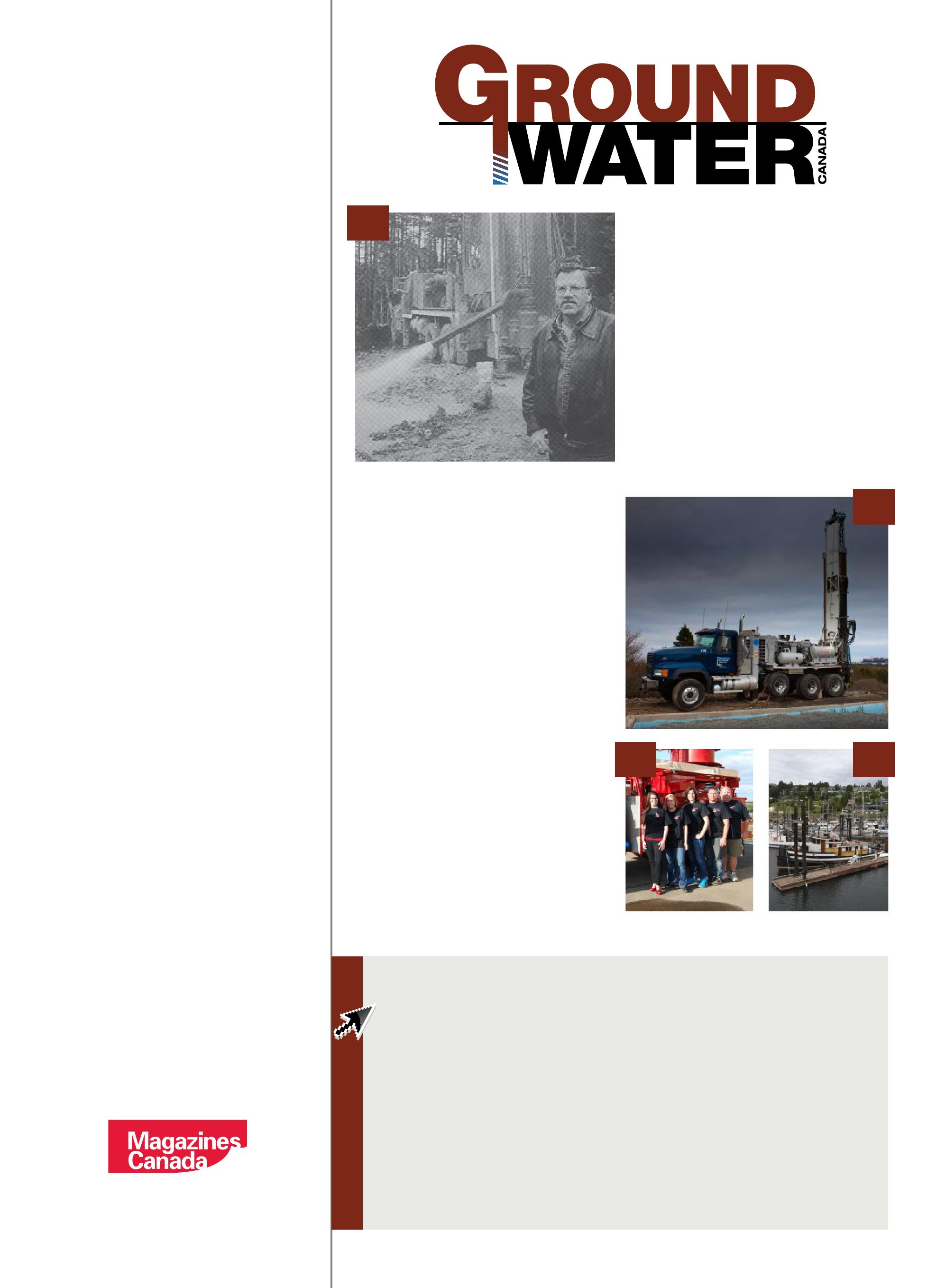
www.groundwatercanada.com
Researchers at the University of California estimated that this year’s ongoing drought in California’s Central Valley will result in a total economic loss of $1.7 billion, along with “substantial long-term costs” of ground water overdraft that will go unaccounted for.
An Alberta Water Council symposium, to take place on June 25 and 26, will explore applications of water reuse for household, municipal and industrial uses at the Hotel Arts in Calgary.

by Laura Aiken
Ground Water Canada was launched in 1974, a busy year peppered with Watergate and the invention of the Rubik’s cube.
Look behind or look ahead – people are most definitely at the heart of the Canadian ground water industry.
Founded by Peter Phillips and Peter Darbishire, the magazine was originally called Canadian Water Well In 2004, it was purchased by Annex Business Media, its current owner. Our summer edition is dedicated to celebrating 40 years of service to our readers, some of whom I like to imagine have been with us from the beginning. Considering entire lives are changed in the seconds it takes to make or take life, a whole heck of a lot happens over the course of four decades: Richard Nixon’s resignation over Watergate; Canada’s official independence from Britain; the Internet; the Gulf War; 9/11; and then more war. It seems the world is always fighting for something, and protection and people are always at the heart of it. The ground water industry is no exception to the rule. A fight for more education and training, for those who work in the industry and the public who depend on water, has been a consistent part of Ground Water Canada’s coverage from Day One. And so have the people behind the fight to conserve and grow; the people on the ground delivering this precious resource upon which human life depends.
In the same year Canada’s national water well publication was born, Ralph Jacobs started drilling wells and fell in love with the water industry. There was just something about it, he said to me during a telephone interview from Nova Scotia. Jacobs’ drilling skills took him from water wells to the oil fields, and back to water again, where he became a prominent fixture in the Maritimes ground water industry. You can read more about Jacobs, his company Bluenose Well Drilling, and his perspective on the past 40 years in the water well industry in our profile on page 16.
One theme Jacobs returned to more than once in my conversation with him was the importance of a family business. He viewed it as the conduit for keeping the ground water industry united, because family businesses are invested in longevity – they want to keep together as a unit, keep the reputation that’s been earned, and keep the family tradition going. The ground water industry is a very family-oriented field, one in which children charm and cavort about its trade shows and generations can be heard voicing opinions side-by-side at meetings. Ground water conventions even offer spousal programs. These are not the sights, sounds and itineraries of all industries. I agree with Jacobs; family is at the heart of Canada’s water industry, and its future strength will be affected by the success of the next wave of succession.
Look behind or look ahead – people are most definitely at the heart of the Canadian ground water industry. Whatever challenges may come will be best fought by a united front that resembles a strong family, and perhaps that form will come in the shape of a renewed Canadian association. Ground water is serious business, and there is still a fight needed to keep it at the forefront of government and public consciousness.
Ground Water Canada is proud to be part of Canada’s ground water family, and we will strive to continue its service to readers for many more years to come. Thank you to all our readers and advertisers for supporting this publication for 40 great years.


NEXT ISSUE: Don’t miss the Fall issue of Ground Water Canada. We’ll be focusing on drill rigs.













A central valley farm in California is partnering with a supplier of highefficiency water solutions to irrigate farmland from a brackish aquifer in the San Joaquin Valley. California farmers were facing zero water allocations this spring following one of the driest periods on record. This aquifer is large and easily accessible, but it has been rendered unusable for many kinds of agriculture due to increasing salinity levels after decades of pumping and drought. Fabbri Ag Services is using a Desalitech ReFlex reverse-osmosis system featuring advanced closed-circuit desalination technology to provide affordable irrigation water, as well as minimize waste generation and energy consumption.
By utilizing a dormant brackish aquifer, Fabbri Ag Services is intending to make efficient use of local water resources without burdening the state’s already strained reservoir system. The installed Desalitech reverse-osmosis system provides Fabbri with 300
gallons per minute of irrigation water to supply about 40 acres of land at a farm near Bakersfield, Calif. The water it produces is so highly pure it can be used to support high-value crops, such as almonds and grapes.
“Agricultural water supply is an economic issue that affects more than just California farmers,” said Nadav Efraty, chief executive officer of Desalitech, in a news release. “It affects food prices and the availability for consumers across the country.”
The company notes in the release that its installation operates at a recovery rate of at least 87 per cent and has been demonstrated at 94 per cent. This results in up to a four-fold reduction in concentrate volume compared to conventional reverse-osmosis systems that typically top out at 75 per cent recovery. It said the ReFlex system automatically adapts to feed water variations, producing consistent product water quality with reduced operating costs. In addition, it consumes 35 per cent less energy than conventional reverse-osmosis systems that would require multiple stages to achieve similar recovery rates.
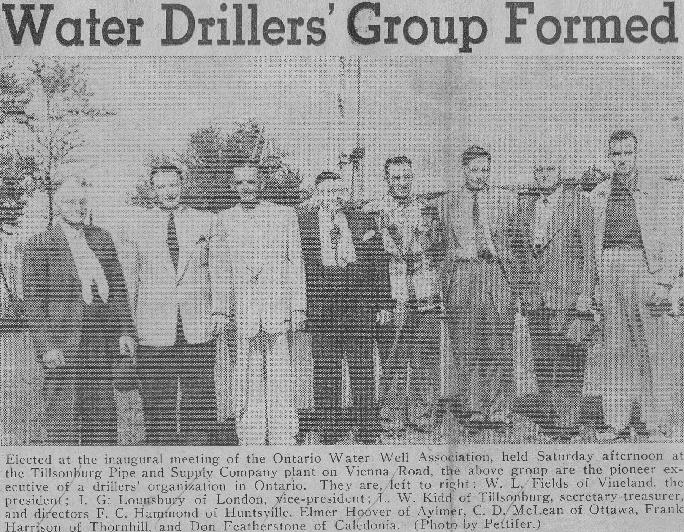
Julie Scheck Freigang has joined Franklin Electric as chief information officer in charge of managing all aspects of the company’s information technology infrastructure, processes and projects.
Freigang will report to Gregg Sengstack, president and chief executive officer at Franklin Electric, a producer and marketer of systems and components for the movement of water and fuel.
Freigang has more than 20 years of technology and business leadership experience. Most recently, she was vice-president of information technologies at Eaton, a company that provides energy-efficient solutions. She joined Eaton in 1992 as a product engineer.
In 1996, she left Eaton to found a small software company, which she ran until it was acquired in 2002.
Freigang graduated from Valparaiso University in Valparaiso, Ind., with a bachelor of science degree in mechanical engineering.
Here’s a snapshot of what else is happening in water.
Canada: The Canadian government is proposing stricter rules to ensure clean water aboard planes, trains and passenger ships for drinking, hand washing, oral hygiene and food preparation.
British Columbia: The Water Sustainability Act, which will replace and update B.C.’s century-old Water Act, was passed in May by the B.C. legislature.
Waterloo, Ontario: University of Waterloo researchers are developing a nanophotonic chip that will allow anyone with a cellphone to immediately detect contaminated water.
Dakota Instruments offers its 6A02 acrylic meters with any one of the interchangeable direct reading scales for water, argon, oxygen, carbon dioxide, nitrogen and helium.
Scales are mounted at the front of the flow body and are positioned and secured by a clear front plate held in place by four screws. Each includes a low hysteresis, multi-turn needle valve.
Dual scales display flow rates in both metric and English units. Long scales facilitate high-resolution readings. Optional scales can be developed for diverse flow conditions facilitating OEM applications.
The meters, which are configured for panel mount, feature yellow backing to enhance scale readability and help minimize eye fatigue. www.dakotainstruments.com
Solinst Canada has released of a new version of the Model 122M Mini Interface Meter, a portable instrument for accurately measuring floating or sinking hydrocarbon/ product layers in water (LNAPL and DNAPL).
The new Mini Interface Meter comes with narrow PVDF cable in 80 ft./25 m lengths, which fits on a compact reel small enough to fit in a backpack. The cable is laser marked every 1/100 ft. and certified traceable to national standards.
The new mini comes with a 5/8 in. (16 mm) diameter probe that is pressure-proof up to 500 psi. The probe detects when it enters product or water with an accuracy of 1/200 ft. (1 mm). It uses optical refraction and electrical conductance to determine product and water interfaces.
The circuitry is automatically tested when the meter is powered on. The enhanced electronics need only one 9 V battery to operate. The meters are certified safe for use in explosive environments and are ATEX certified.
www.solinst.com
Flomatic’s 80DICL-VFD model submersible pump check valve is marketed as both quieter than the average check valve and self-cleaning. Standard check valves will “chatter” and be noisy when a variable-frequency drive (VFD) pump goes to low flow,
causing premature wear and eventual failure, said Flomatic in a news release. These valves, which are designed for use with VFD pumps, are designed to minimize flow losses and hydraulic shocks in the pumping system.
They feature a standard epoxy coating (NSF-approved powder) on a ductile iron body that incorporates patented Certa-Lok groove lock type

pipe connections to support deep-set pumps. A stainless steel, guided poppet system is designed to ensure the valves automatically adjust noiselessly from high to very low flow rates.
The radiuses of the valve seat allow a self-cleaning, one-point swiping action by the radius-edged, custom-moulded rubber seal disc.
www.flomatic.com
• Reliably measure water levels and total well depth
• Reliably measure water levels and total well depth
• Durable non-stretch PVDF flat tape
• Durable non-stretch PVDF flat tape
• Accurately laser marked each mm or every 1/100 ft
• Accurately laser marked each mm or every 1/100 ft
• Certified traceable to national standards
• Certified traceable to national standards
• Provide clear, accurate measurements of depth and thickness of LNAPL and DNAPL product layers in water
• Provide clear, accurate measurements of depth and thickness of LNAPL and DNAPL product layers in
• Certified Intrinsically Safe for explosive environments
• Certified Intrinsically Safe for explosive environments
• Laser marked PVDF flat tape and cables are easy to decontaminate
• Laser marked PVDF flat tape and cables are easy to decontaminate
Ground Water Canada , which began life in 1974 as Canadian Water Well, was first published by Agri-book, then taken over by peter Darbishire and peter p hillips, who formed A is Communications. Annex p ublishing & p rinting purchased Ground Water Canada and other magazines owned by the pair in 2004.
by COLLEEN CROSS
le FT: Norman Faulkner, founder, past president and now honourary life member of the Ontario Ground Water Association, accepts gifts from James Wilson (R), association president from 1977 to 78 at at the 1977 convention.
righT: Claude Cousineau and daughters
Marie-Claude and Patricia of Henri Cousineau & Fils were profiled in the June 1989 edition of Canadian Water Well
Phillips and Darbishire, along with editors Elinor Humphries, Scott Hill, Craig Power, Chris Skalkos and Laura Aiken, have covered the industry over the years.
A look back through 40 years of Ground Water Canada reminds us that despite the weighty concerns of ground water contamination, well-drilling and inspection techniques, worksite safety, water quality, certification, unification among provinces and geothermal technology, people are still at the centre of the ground water industry and its development.
Andreas “Andy” Knelsen, first president of the Canadian Water Well Association (later to become the Canadian Ground Water Association), showed concern with two facets of the water well driller: professionalism and

image. On the one hand, drillers are concerned about raising and maintaining standards within industry ranks, he wrote in his initial address in 1978. On the other, they are mindful of the impression they present to the public. Through four decades of coverage, education has been a constant priority: education for water well drillers and technicians from within the ranks, and education of all levels of government and the general public about the role of the water well driller and importance of caring for ground water and private wells.
Here is a four-decade “dip into the well” of ground water history through our pages in honour of Ground Water Canada’s 40 years of proud service to our readers who protect and provide a resource no human can live without.
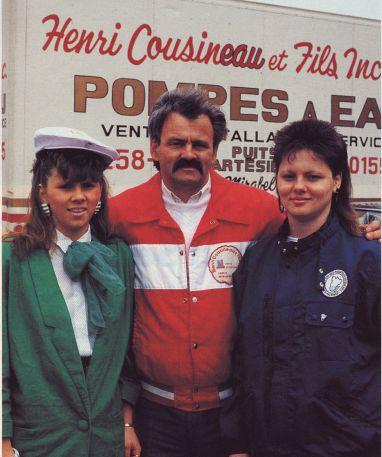

From well irrigated pastures to watering acres of farmland to meet crop requirements, the AG Series from Franklin can keep your business growing. With five of the industry’s most popular rating options, standard JM and JP motor frames, and a back pull-out assembly for ease of seal replacement, the AG Series proves to offer improved efficiency and overall performance. And to top it off, it is assembled in the USA.
3 to 75 hp, pressures to 175 psi | Heads to 330 ft 50 to 1000 gpm | Operates up to 212 °F


• A feature on Tillsonburg Pipe and Supply Company, which later became Wellmaster Pipe and Supply, reminded readers of the first meeting of the Ontario Water Well Association, provincial forerunner to the Canadian Water Well Association (CWWA), which was hosted by the company on June 1, 1952. That meeting saw more than 100 drillers from the province meet to organize the provincial association, listen to speakers and take in a drilling demonstration by the BucyrusErie Company of Milwaukee, Wis. From that early date, the OWWA aimed to abolish a provincial license fee on drillers. Wilfred L. Fields of St. Catharines was elected president.
• On Dec. 19, 1962, the Canadian Water Well Contractors Association was officially formed. In June of 1974 it dissolved due to provincial and federal requirements and was re-formed as the Ontario Water Well Association (OWWA). According to association records, interest at that time was building among the provinces to form a national association.
• In June 1977, the Canadian Water Well Association (CWWA) was re-instituted minus the word Contractor.
• Andy Knelsen of Barrie, Ont., elected first CWWA president in April 1978, told Canadian Water Well in June of that year that “professionalism must be encouraged among Canadian drillers” and that one key objective of the association was to raise public awareness of the role of the water-well driller. Knelsen also said there was work to be done on the image of the driller. “There has been a tendency for an image to build of the driller as a man concerned only with the number of feet drilled. We have to educate the clients that water comes from aquifers and that the depth at which this water can be found may vary dramatically.”
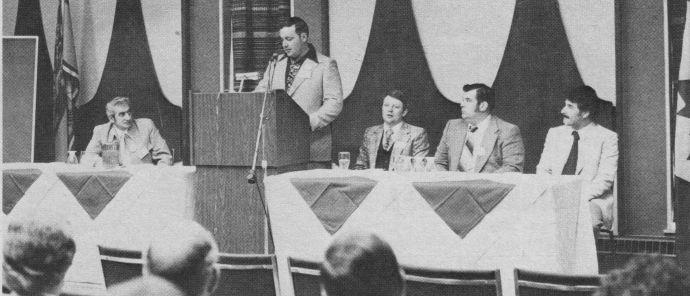
Representatives of each province’s association discuss drilling acts and licensing programs at the Atlantic meeting in 1978. From left to right: Joe Saab, president, New Brunswick; Eugene Veinotte, vice-president, Nova Scotia; Wayne Chisholm, president, Nova Scotia; Jim Tucker, president, Newfoundland; and Watson MacDonald, president, Prince Edward Island.
• Members from seven provinces made up the original national association: British Columbia, Alberta, Saskatchewan, Manitoba, Ontario, New Brunswick and Nova Scotia. Newfoundland, Prince Edward Island and Quebec joined later.
• In June of 1979, Canadian Water Well profiled Norman Faulkner, who started Faulkner Well Drilling in 1934. In 1946, Faulkner bought three used, track-mounted drill rigs from Steep Rock Iron Mines in Northern Ontario and his first brand-new rig in 1953. By 1958 he had three new churn drill rigs, recalled son and then-owner of the company Jim Faulkner, who said “Faulkner Drilling probably accounted for about half the wells drilled in this part of southern Ontario.”
• Uniroyal and Dom-X, suppliers of the ABS plastic compound, predicted a surge in well casings made from the compound, already in wide use in the U.S.
• With increasing movement of people to rural areas and the advent of appliances such as the automatic washing machine and changes in water-use habits, water conditioning was in high demand and seen as a way for drillers to diversify.

Three of the four generations of the Fields family get together on a site near St. Catharines in 1978. Marshall Field, centre, was drilling this well near the edge of Lake Ontario and had just brought in water, when his father, Ray, right, and grandfather Wilfred, left, visited the site.
• In the summer of 1978, Durl Hopper of Seaforth, Ont., was surprised to find the capability of the well his company was drilling measured 980 gallons per minute, nearly double the 500 the town was expected to produce.
• Canadian Groundwater Industries of Lloydminster, Sask., was reported to be providing an inspection service using a small TV camera and closed-circuit screen.
• University of Guelph professor J.B. Robinson anticipated nitrates would reach wells due to overuse of fertilizer. “Farmers should be educated in the effect of excess manure on water quality,” Robinson said in the article. The issue would resurface repeatedly and as late as spring 2014, when Rachel Beavins Tracy detailed a decade-long Canadian study that










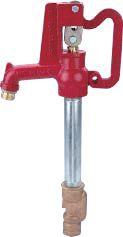







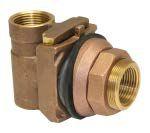





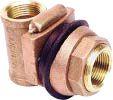



















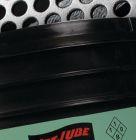
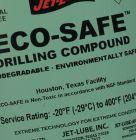


offered solutions to the human health hazard.
• An August of 1979 feature entitled “Safety on the drill site” explored electrical hazards and natural gas pockets, noting the Ontario Workmen’s Compensation Board paid out $71 million in medical aid and other benefits to some 16,000 victims of lost-time injuries.








ECO-SAFE Drilling Compound provides excellent protection against seizing and galling and can be used for pipe joints or thread connections.
ECO-SAFE is an entirely metal-free compound containing carbon-based bers and additives and other extremepressure and anti-wear additives. These are blended into JET-LUBE’s complex base grease. This new base grease offers the additional advantage of superior adhesion to wet steel surfaces, and resistance to water wash-off.
• Rated: -20 F (-29 C) to 500 F (260 C)
• Excellent performance on high-chrome or nickel alloys
• Contains no metals
• NSF H2 Registered
• Nontoxic
• High lm strength
• High frictional properties
800-JET-LUBE | 800-538-5823 | www.jetlube.com

• In August of 1979, the Barber Dual 12-24 came on the scene, boasting a Cummins diesel engine with 290 horsepower and weight of 45,000 pounds.
• Overall, in 1979 Canadian manufacturers of mobile drill rigs seemed pleased by a change in status for imported rigs by Revenue Canada under the provisions of Section 6 of the Customs Tariff, “although the industry was wary of the effect it may have on the industry generally.” The provision changed the status of mobile drill rigs to “class-or-kind” and subjected them to 15 per cent duty.
• The Quebec Water Well Drillers Association (QWWDA) was re-launched after being inactive due to various problems. “One of the current hot topics . . . is the new Quebec zoning law which limits the use of agricultural land for other purposes. Walter Oes, QWWDA director, said “this has cut the workload of some drillers in the province by 50 per cent.”
• The Canadian Water and Wastewater Association was founded in November 1986 to provide a national voice for owners of municipal water and wastewater systems.
• In January, 1989, Elinor Humphries, editor of the magazine, expressed disappointment that the British Columbia Water Well Drilling Association, which was calling for mandatory certification of drillers in the well-drilling trade, was told by the minister of the environment it would be
necessary to get approval from all well drilling contractors and change the existing Water Act.
• Well driller Theo Gerrits said in a January 1989 profile that he advocated educating his customers. In many cases, he said, customers read the book on water wells published by Environment Ontario (now the Ministry of the Environment), before they call him. “I think it’s good!” he said. “They know what questions to ask. If they haven’t seen the book, I make sure to give them one.”
• The feature “Weak well and good water service” gave readers technical information on how to meet high demand from households with multiple bathrooms and heavy-water-use appliances. “Here is an idea,” said Don Radford of Goulds Pumps. “Let’s install a 10 gpm pump. If we consider today’s energy saver fixtures that restrict the flow rate at 2-1/2 to 3 gpm each, then we could run several fixtures at once.”
• Acushnet Rubber Division developed an elastomer formulated to impart no taste or odour to drinking water for use in storage tank diaphragms of well water accumulators and reverse-osmosis filter systems.
• By September of 1989, international projects were frequenting the magazine’s pages. Ingersoll-Rand Canada supplied three mobile water well drilling rigs, tools and training to a state-owned provider of drinking water to rural Angola.
• Federal government liaison committee members Bill Morrison, Wayne MacRae, Lock Gray and Maurice Lewis met Dennis Davis of Inland Waters to discuss mutual concerns and ways the association could work with government.
• A January 1990 global ground water update told readers about a new telemetry application developed in the

San Joaquin Valley of California to monitor levels of ground water contaminated with trichloroethylene and predict which underground route toxic plumes will take.
• In April of 1990, Canadian Water Well reported that pump installer licensing was implemented in 1989 under Ontario Regulation 612/84 for those involved in the installation of pumps and pumping equipment in water wells. Contractors became required to obtain a Well Contractor Licence and employees actually performing the work were then required to have a Well Technician Licence, Class 4 (Pump Installation). The other three classes have been required since 1986. “During 1989 approximately 400 new well contractor licenses and 1,000 new well technician licences were issued.”
• In April of 1991, researchers were hoping that a naturally occurring phenomenon could be used to reduce nitrate levels in ground water. The University of Guelph’s Eric Beauchamp and a team from the department of land resource science were said to be studying ways to estimate denitrfication – conversion of nitrate into nitrogen gas – in soil. Denitrification occurs by the action of bacteria in watersaturated soil. The team aimed to create a model for predicting within a 25 per cent certainty level of denitrification by means of temperature, degree of water saturation of the soil, nitrate concentration, availability of organic carbon substrate and availability of oxygen.
• In June of 1991, Canadian Water Well reported the effects on surrounding ground water of a tire fire in Hagersville, Ont., in which nearly 14 million tires were burned or melted down. An article detailed progress of its cleanup and explored the extent to which poorly managed domestic wells are also culprits in contamination.

Graeme Wakeling, executive officer, Australian Drilling Industry Association; John Schmitt, president, NGWA, in 1996; Maurice Lewis, secretary-manager, CGWA; and Martin Hammond, president, CGWA, sign mutual co-operation agreements among the three organizations in December 1996.
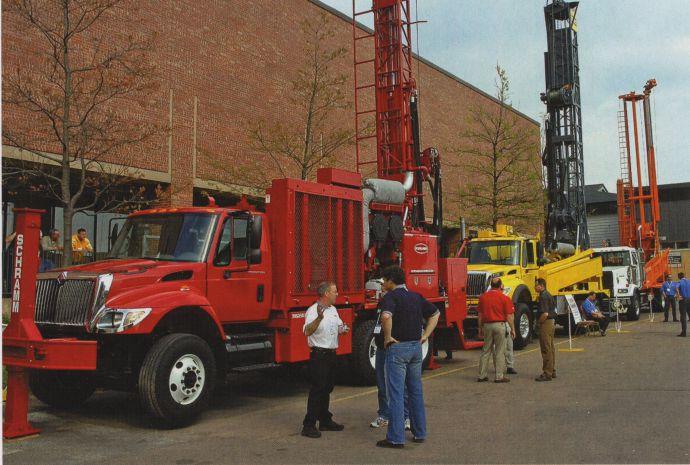
• Resource and Conservation Recovery Act’s underground storage tank regulations were forcing difficult business decisions for well drillers and suggested tank owners evaluate their legal liability for both personal injury and property damage in the event a tank leaks.
• A 1992 article focusing on computers – eight years ahead of Y2K – offered readers ways to ensure their hardware wasn’t vulnerable to power problems, including surge suppressors, voltage regulators and line conditioners, and standby and uninterruptible power systems.
• Water treatment was still seen as a worthwhile sideline in a profile on MacDonald and Sons of Montreal, a company successfully providing this service. Gord Smith, the company’s vice-president, told Canadian Water Well that the biggest hurdle to expansion was lack of knowledge by dealers, but he also shared that the company had experienced a 30 per cent increase on its water treatment side. “It’s a fascinating and frustrating field,” he said. “You’re competing with guys who are vacuum cleaner salesmen
Continued on page 26

Typically oil and water don’t mix. b ut for drillers, one career might just stir them together. For r alph Jacobs, his penchant for drilling took him offshore for oil but ultimately brought him back to the land of water.
Born in Newfoundland, Jacobs left his birthplace in 1971 and began working for a Halifax well drilling company in 1974. He spent six years drilling before the turn of the decade saw him venture into offshore oil, where he climbed his way up to work as a driller. Jacobs worked two weeks out to sea and then two weeks off, time during which he continued to drill water wells and keep his license current. But by 1987, the hardships of a career in oil had him thinking of getting out of it altogether.
“You travel a lot. There’s a lot of pressure as you move up the ladder, and sometimes you only feel like a number rather than a name. The industry runs 24/7 in all kinds of weather, drilling in unbelievable conditions. You’re shipped all over the world with no idea where you are going to be from month to month.”
And, at the heart of it, he didn’t like being away from home that much and found the profession to be very hard on family life. He had no inclination to leave drilling because he had always been attracted to the work. He is one of 12 children – six boys and six girls – and he is the only one who went into drilling.
Firmly committed to drilling, he also found that there was something about water that he just couldn’t get out of mind. So, in 1987, he took on a partner, bought a water well rig, and formed Bluenose Well Drilling in Lawrencetown, N.S. He worked one more year in oil
to make sure he was making the right decision – the money in oil was nothing to sneeze at in the 1980s – before returning full-time to the water industry in 1988. The partner stayed on in the business until 1990, at which time Jacobs took over full possession of the company. He hasn’t looked back since.
“Every well is different, every site is different, no two installations are alike; it’s something to wake up to every day that’s different. I’m out of bed at 5:30 in the morning and I still go down to our shop. I like getting the wells started for the guys. I still do a lot of selling and site business…I’m still available to drill every day if it need be.”
In 1991, events steered the business towards it becoming the family-run operation that it is today. His brother Byron, who was living in Pickering, Ont., at the time, was laid off from the job he’d had for 15 years. He had never drilled before, but he was seeking employment and wanted to move back east. Jacobs brought him into the business, and says that his brother turned out to be a good driller. For the first three to four years, the company only drilled wells, but eventually it branched out into pump installation, and Jacobs created another partnership to form Bluenose Water Cleaners to focus on water treatment. He continued growing the company from one rig, to two, and added more service trucks and cube vans.
by LAURA AIKEN
Bluenose now runs three crews, one for pumps and two for drilling.
His brother’s son Travis just recently got his drilling license, and Jacobs’ own son Larry is a driller and a troubleshooter for pump installation. His wife Marilyn also works in the business. Turning Bluenose into a family operation has worked well, says Jacobs, noting that it helps that they are all on the same page. With Bluenose firmly ensconced as a family affair, Jacobs has a clear succession plan in place. He says the success of his water well drilling business is all about keeping it together as a family enterprise. Jacobs established a family trust in 2005 to have the other members working towards their ownership. He says he would not just sell the company to a stranger.
“The name is worth a lot of money and I worked hard, six days a week, 12 to 14 hours a day, to make the name what it is today. Family businesses help keep the industry together, by keeping the company and the reputations going.”
The Bluenose name is very iconic and local to Nova Scotia. The Bluenose was a famous Canadian racing and fishing ship whose image appears on the Nova Scotia license plate. Jacobs is one of multiple Nova Scotia businesses to capitalize on the name. However, after the company was named, he received notice that small businesses wouldn’t be able to name themselves after the Bluenose anymore.

“The government started to put the squeeze on, at one point wanting me to give royalties to them if we continued to use the name, but that didn’t go anywhere.”
At one time Jacobs was pressured to give up the name altogether, but no enforcement came of it so the name stuck around, as did Bluenose Well Drilling.
Over his 40 years in the industry, Jacobs has become a passionate advocate for the public drinking supply. He served as president of the Nova Scotia Ground Water Association for about 10 years and advised on various focus groups in the province concerning ground water. He spent about 12 years working on a Nova Scotia ground water advisory board.
One of his biggest concerns is keeping the provincial Ministry of Environments (MOEs) focused on having water and the treatment of private water at the forefront.
He stated that MOEs “Need to pay more attention to educating the public on how to take care of a private well. Need to do a better job.”
Good initiatives have happened, he says, but in the last five to 10 years he has seen provincial budgets get tighter and feels less money has been allocated to protecting the safety of private water supply.
“I think we had more money spent on water and education 15 to 20 years ago than we have in the last five to 10 years.”
He notes that when he was a kid, people were told to get in and out of the shower in five minutes, whereas today’s generation is inclined to stand in the there for 20 minutes.
“I don’t think our ministry of environments are putting out
Until you try the 40-500, you’ll never realize what you’re been missing! Our incredible 5” bore, 8” stroke piston pump has the longest service life in the industry and will hold up under the most extreme duty cycles you push it through. Great for several applications, including bentonite grouts, #8 mesh polymer grouts, sand-enhanced grouts and cement grouts. When you need lots of power, the 40-500 is for you!

• 0-40 GPM and pressures up to 500 PSI
• Quality 27 HP Honda electric start engine
• Stainless steel mixing tank and bag platform
• Hydraulically-driven stainless steel mixer paddle
• Hydraulic oil cooler
• Powerful water fill pump and rinse line
• Full length fork lift pockets, powder coat paint
Check out our full line of grout pumps and accessories at: www.geo-loop.com EMAIL jeff@geo-loop.com 1-712-434-2125 OR 1-800-580-5965 U.S. ONLY
the importance of not wasting good potable water that is getting more expensive to get.”
Jacobs hasn’t changed his prices much in the last 10 years, and he thinks it’s getting harder for the new generation to make a good margin with the incessant rise of fuel and equipment costs. He finds the banks difficult to get reasonable interest rates from in the purchase of new equipment, which also hampers growth.
“Running a small business today you really have to make sure all your T’s are crossed and there’s no loopholes or you’ll be throwing money away.”
In addition to the financial challenges, Jacobs finds it’s also getting harder and harder to find qualified people, particularly in the east when the only drilling programs in Canada are located in Ontario and Alberta. There used to be a program in Cape Breton, N.S., but it closed. There ought to be more courses available in each province so students don’t have to travel to Ontario or Alberta, and they should be provided at a reasonable cost, he says.
“There is definitely a problem with the training. We’re training the kids to go into the oil and gas field, but not enough into water. Kids should be taught more about it in high school so they think of it as a career – and not just drilling and water treatment, but all parts of the industry. That’s a little dig in there for our federal government to get more involved in ground water.”
After four decades in drilling, Jacobs has seen many changes and issues that still need to be addressed in the industry, but one fact hasn’t changed at all.
“I’m a little over 60 years old now and still having fun.”


As Ground Water Canada celebrates its 40th anniversary, we wanted to take the time to recognize the programs at r ed Deer College in Alberta and s ir s anford Fleming College in o ntario for the long-standing foundation they have been providing to up-and-coming drillers in the industry. h ere’s a look back at two past alumni who got their start in the programs.
by J ULIE F ITz-G ERALD
The Schmidt family of Darcy’s Drilling Services in Alberta: Lindsey, Tasha, Cara, Michael and Darcy.
DArcy’s Drilling s ervices A fAmily AffAir
For Darcy Schmidt, president of Darcy’s Drilling Services in Ponoka, Alta., water well drilling is a family calling. Schmidt grew up around drilling rigs and pump systems, helping his dad with the family business, Schmidt Drilling. He started drilling full-time with the company in 1978. Schmidt says he was one of the first people to complete the Water Well Driller Apprenticeship program offered by Red Deer College (RDC) in 1980.
While Schmidt was learning the ins and outs of the family business from his father, RDC’s Water Well Driller Apprenticeship program provided him with the tools to expand his knowledge about water wells.
“It runs you through a lot of the different aspects that you don’t learn in your day-to-day job working with your father. It gives you a formal structure to follow. You get a lot more information from geologists and you learn more factual information. You learn to follow better practices from industry professionals. When I went we had talks about how to price your systems, how to size your systems and a lot of things that, when you’re used to doing just one single thing which a lot of contactors do, you don’t learn the full scope of the water well industry, and I think when you’re in school you start to learn that.”
Over the next two decades, Schmidt Drilling carried on and Darcy eventually became





president. In 2005, a company that was interested in purchasing the business approached him.
“We were approached by a company who felt we were more important to them and they made us an offer.”
The offer was too good to refuse and the family business was sold.
However, by 2007, Schmidt was itching to get back to the job he loved, backed by encouragement from his family.
“I was always tied to the water well industry and my son and family were involved with us at Schmidt, so they were intrigued about starting again and working in that field so we started up again.”
He started Darcy’s Drilling Services the same year and now leads the business with his adult children by his side: Michael Schmidt is operations manager, working both out in the field and in the office; Cara Schmidt is a journeyman well driller; Tasha Lydom is office manager; and Lindsey Schmidt is receptionist, although she’s moving on from the family business to be an accountant. “But we believe she will be back,” Schmidt chimes in.
There is no mystery to the Schmidt family’s love for providing customers with clean water. “I think it’s something that you learn. The people in the industry are great, right from the contractors to the suppliers; everyone you meet. I think everyone’s likeminded, entrepreneurial. We like working with our hands and delivering a clean, fresh product to homeowners. We feel pretty good when we can supply them with a nice clean well and water system, and can get them out of binds when their well quits. That’s what compels us.”
Both Michael and Cara have also completed RDC’s Water Well Driller program, adding to their breadth of knowledge in the industry. When asked about how the program has evolved over the years, Schmidt still holds it in high regard. “I think RDC’s program is better structured now with more relevant information. They’ve adapted the course and keep moving it forward so the apprentices can learn newer information. They’ve been deleting some things that are getting kind of archaic and adding the new up-and-coming stuff, so [my children’s] outcome has been pretty close



SubDrive SolarPAK SYSTEM is ideal for providing water anywhere the sun is shining. Powered by a renewable energy source, it is capable of tackling the challenges of the harshest environments. Discover the new power in solar pumping. Get the quality you expect from the name you already trust.
Experience Quality. Experience Franklin.


• Monitoring Well Supplies
• Horizontal Directional Drilling Supplies
• Geothermal Loop System Supplies • Groundwater Sampling • Dewatering • Direct push toolong
128 Walgreen Rd Ottawa, ON K0A 1L0 877-221-9832
1011 Autoroute 13 Laval, QC H7W 4V3 450-681-6633
www.pvcplus.com

250 Fielding Rd.,Unit 2 Sudbury, ON P3Y 1L6 705-682-4333
3551 White Oak, London, ON N6E 3A1 519-690-0444
to what I felt mine was. They’ve done a good job in the course with moving it ahead and keeping up with the times.”
As a member of the PAC Committee with Apprenticeship and Industry Training Alberta for the water driller trade, past president of the Alberta Water Well Drilling Association, and past board member of CGWA, Schmidt points to RDC’s collaboration with various associations as an asset to the water well driller program.
“Red Deer College has done a great job working with the water well association and the water industry to bring great instruction into the courses, and in turn that shows up in what you get out at the end for a driller.”
With water well drilling now spanning three generations in the Schmidt family, it truly is a family affair. Schmidt’s hope for his children’s future in the business is simple: “I hope they will flourish and build it stronger and keep moving it ahead. I hope that they can continually keep this business in operation, doing what we do. There are a lot of aspects that seem to infringe on us, like water pipelines and regulations. There are more hurdles that they have to cross than when I started doing it.”
You could say that Gregory Bullock’s entry into water well drilling was serendipitous, having enrolled at Sir Sanford Fleming College for an entirely different program: fish and wildlife. Fortunately, Fleming has a “common first semester” where all students in diploma programs take the same courses, giving students the chance to explore other fields of work and change direction if another program appeals to them. That is exactly what Bullock did, switching up his program choice and enrolling in the Resources Drilling and Blasting program instead.
Now president of Eades Well Drilling in Lindsay, Ont., and past president and board member of the Ontario Ground Water Association, Bullock is certain he made the right choice.
“I like working outdoors and meeting new people. I like providing homeowners with an essential service. You can’t live in a rural setting without water, so that’s what we do. When a well comes in with a good flow rate, everybody’s happy and
there’re smiles all around. It’s a good feeling of satisfaction when you complete a water well or provide emergency service to someone whose pump’s burned out.”
Bullock credits Fleming’s drilling program with giving him the start he needed to be successful in the industry. “It’s an excellent college. They expose you to all the main types of drilling at the time – water well, geotechnical, diamond drilling, and blasting. It is a great foundation for someone getting into the industry; it’s a start. There’s nothing like getting out in the field and doing it for real, but it’s certainly a great start,” he says, noting he got his DZ license from the program and is still friends with many of his former classmates.
After graduating in 1987, Bullock spent the next 12 years working for a well drilling company before wanting to branch out on his own.
“I decided that if I was ever going to get ahead in life, I needed to do something now or it wouldn’t happen. I was 30 years old and had lots of experience with drilling but no experience with owning
my own business.”
Eades Well Drilling was a wellestablished business at that point, having been founded in 1977. The owner was approaching retirement and Bullock was ready to take the leap into businessownership. It was perfect timing. Bullock took over the company in 1998 and now has four cable tool drilling rigs and three employees to keep up with demand during the busy times of the year. The secret to Bullock’s thriving business is his wife, Dodie.
“She’s a big part of our business. She’s my partner and I couldn’t do it without her.”
When business slows in the winter, Bullock can often be found back at Fleming teaching the water well course for third-semester students and a 10-day continuing education course. His ties with the college run deep, from classmates who are now his colleagues in the industry to new students that are coming up through the ranks.
“It’s about giving back. And that’s why they ask me to do it. I’ve got lots of experience and when I’m standing

in front of a group of 18- to 20-yearold students, I feel that I can certainly impart some of my knowledge to them and help them succeed.”
It’s this kind of in-depth industry knowledge, as well as an eye to the future that will be pertinent for water well drillers in the years to come. With the lack of lot creation in rural Ontario, the number of new wells is also dwindling.
“It hasn’t been a huge growth industry in the last five to seven years. There’s always going to be maintenance; there are lots of wells out there that need to be repaired, but as far as new wells go it comes down to attrition; as old wells fail they need to be replaced. A lot of people in the industry have diversified into geothermal drilling or directional drilling. I’m hopeful that the industry will thrive, but I’m just not sure. We need some lobbying to occur to allow municipalities to permit building in rural environments.”
Julie Fitz-Gerald is a freelancer writer based in Uxbridge, Ont., and a regular contributor to Ground Water Canada.
Continued from page 14
and water treatment experts.”
• Westvaco introduced the Bio-Nuchar wood-based activated carbon to Canada. Westvaco and PICA had co-operated on the use of special wood-based carbons in biological treatment processes for potable water.
• In 1992, the CWWA published its Guidelines for Water Well Construction, intended to provide a basic minimum standard across Canada.
• In the June of 1993 CWWA newsletter, the Industry Qualification and Certification committee, chaired by Maurice Lewis, recommended to the Canadian Council of Directors of Apprenticeship that interprovincial training and reciprocal recognition of trade designation be put in place so that every province will have journeymen drillers under which trainees can apprentice.
• A technical feature on hydraulic fracturing, or hydrafracking, described the process borrowed from the oil well industry that offers an alternative to the unpredictability of surging or dynamiting.
• A September of 1993 feature discussed the pros and cons of air strippers as tools for the removal of volatile organic contaminants from ground water. “Strippers pass contaminated water through a tower through which
a large volume of air is blown,” said the article, but they are often plagued with operating problems.
• The Drilling and Blasting Training Centre of Sir Sandford Fleming College’s School of Natural Resources in Lindsay, Ont., graduated the first class of its pump systems apprenticeship program.
• Ground Water Canada reported the Canadian Association of Pump Manufacturers was concerned about the costs of certification to meet the requirements of the proposed Health Canada legislation standards, NSF61, for treatment devices, treatment additives and system components.
• The Canadian Ground Water Association, the new incarnation of the CWWA, signed mutual co-operation agreement with the National Ground Water Association at the NWGA annual convention in Las Vegas in December 1996.
• The June 1997 CGWA newsletter described an extensive letter-writing campaign that began in 1996 to voice its concerns that improper abandonment of test holes by the oil and mineral exploration industry could provide a direct conduit for contaminants to enter ground water.
• Among new products featured was a high-resolution, high-sensitivity underwater camera, which boasted


Pearson Drilling Company has been helping clients since 1989 with their environmental drilling, geotechnical services, and water well drilling needs. Quality workmanship, conducted with a top priority for safety and efficiency is important to their business.
The GEFCO 30K provides the ease and efficiency they can rely on to ensure maximum productivity for each drilling project.
The GEFCO 30K is perfect for shallow municipal or deep residential water wells. 25,000-lbs. single-line winch combined with the hydraulic rod spinner makes tool handling fast and easy. This is the flagship of the GEFCO water well line and continues to be a leader in the industry.

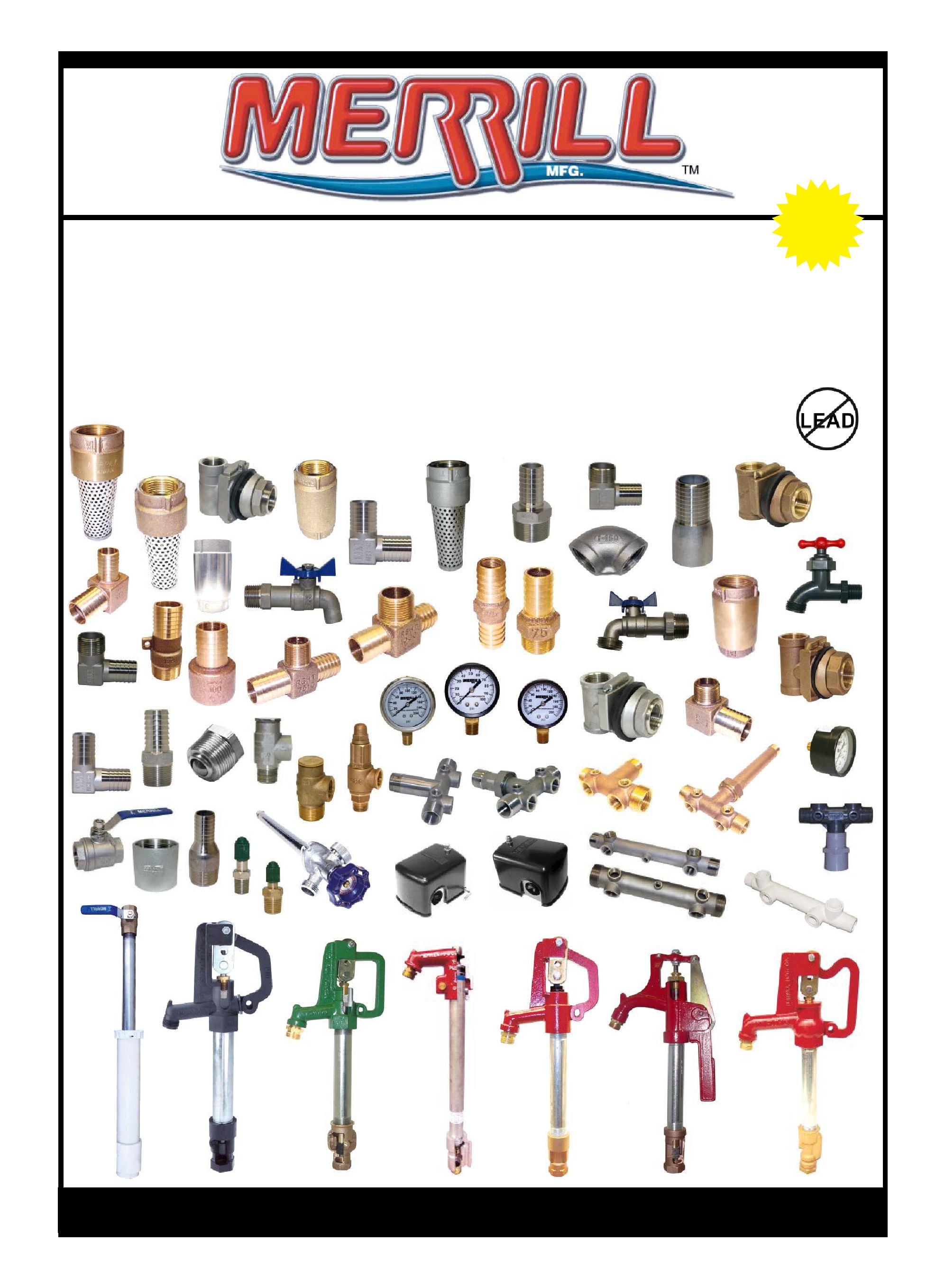
Jean Côté

excellent colour reproduction. It was designed for water well inspection but applicable for cased or uncased borehole inspections.
• In June of 2000, engineer Brian Beatty, then-director of the scientific and engineering division of the OGWA, predicted a “paradigm shift” in the use of water. “As municipalities start to finance their own water supplies and infrastructure, we will become a more conservative society. Governments will adopt efficiency standards for household plumbing fixtures. Leaks in the distribution piping will be reduced. Society will tolerate brown lawns, and we will learn to squeeze more out of the existing supply. . . Water use efficiency and reduced consumption, however, will not offset the increased demand of a growing urban population.” Beatty concluded, “Ground water will be brought into the mainstream of planning in communities where abundant supplies are available.”
• E-commerce was first mentioned in CanWell 2000 and highlights such as web catalogues were touted as a convenience for purchasers.
• In a June, 2001, editorial, managing editor Peter Darbishire said three questions were being asked following the 2000 E. coli contamination of the water supply at Walkerton, Ont., which led to seven deaths and sickened more than 2,300: “Is our ground water safe? What contaminants are harmful? How can we protect our supply?” and stressed the importance of the industry being “seen and heard doing the right thing in protecting this most valuable resource.”
• The CGWA, the NGWA, University of Waterloo, and Red Deer College hosted a joint conference on hydrogeology in Banff, Alta., for contractors, drillers, scientists and engineers.
• Wayne MacRae, then-executive director of the CGWA, pointed to three ongoing issues in the industry: communication among provinces and the organization’s Canadian office; finances; and training and certification.
• Ground Water Canada offered a history of ground water that went right back to the Archimedes’ screw in its summer 2012 issue.
• In April 2013, bankruptcy claimed the life of the Canadian Ground Water Association, with the Canadian GeoExchange Coalition the prime indebted after a three-year battle. The bankruptcy leaves “a wound for two industries,” said editor Laura Aiken in a June 2013 editorial, noting that it “doesn’t need to mean the end of a national association. It’s simply the end of a corporate number.”
We hope you’ve enjoyed this look back at an eventful first 40 years. The team at Ground Water Canada is looking foward to ringing in the changes and providing information and perspective to this vibrant and growing industry for the next 40 and beyond.

• Expand your knowledge on all things groundwater-related.
• Discover the newest in products and services from hundreds of exhibitors.
• Learn from real-life experts in the field on subjects ranging from business management to groundwater supply.
• Meet with thousands of professionals from all groundwater industry sectors in one convenient location.
• Keep current on issues affecting the industry.
When the town of g ibsons, b .C., embarked on the community-outreach component of its aquifer-mapping study, the goal was to foster engagement in the town’s efforts to sustain and protect its most precious resource. e vidently, it’s working.
by CAROLyN CAMILLERI
The quaint harbour town of Gibsons, B.C., is the site of a big development controversy centred on the community’s aquifer.
The study, which ran from 2009 to 2013, provided the town with comprehensive information about the aquifer, along with recommendations for managing this natural asset. In a Fall 2012 article* in Ground Water Canada about the study, lack of interest in the aquifer was identified as a concern. But all that has changed, and, in recent months, the aquifer has become a sensitive issue in a heated controversy.
The controversy has come about, in part, due to a development proposal. “The George” is a hotel, residential and conference complex that, if accepted by council, will be the largest—and tallest—development in the community of 4,400 residents.
“The controversy is essentially – are you in favour or not of the George development,” says Dave Newman, director of engineering for the town of Gibsons. “There are strong views on
both sides—if you want to call them sides— and one of the concerns is the potential of the development to have an impact on the Gibsons aquifer.”
Meanwhile, there has been a gradually building awareness of the aquifer, says Newman, “and then the current proposal comes in and one of the first things out of the block is ‘What is this going to do to the aquifer?’”
According to Suzanne Senger, president of the Gibsons Alliance of Business and Community Society (GABC), for the first six or seven months after the proposal was first submitted, people recognized there was an issue but figured the town would resolve it.
“In November [2013], when the redesign came back and those issues hadn’t been dealt with yet, that was when terms like ‘catastrophic blow out’ started to come out into

the public realm,” she says. “It is a motherhood issue. People are really protective and defensive.”
The problem is this: in the original development application, the George’s foundation penetrates 14 feet into the aquitard.
“It was pretty clear that this is a seriously risky situation and so we did the advocacy thing and went to the town and said, ‘Look, you know, we’ve got these big concerns,’” says Senger. “But we were getting quite, I don’t want to say stonewalled, but basically, the messaging we were getting back was, ‘Don’t worry, don’t worry, it’s all good.’”
But the aquifer is just one concern with the George. Senger says the GABC has three “requests” for the town, with “no risk to the aquifer and no excavation into the aquitard” topping the list. The other two concerns are for due diligence and no dredging in an area considered toxic and “respect the official community plan,” which addresses building height.
For Mayor Wayne Rowe, the real controversy is about the town’s future direction and is “amongst those who really don’t want to see anything change or feel that the magnitude of the change is more than they are comfortable with and another large part of the community that feels the time has come for the town to encourage development.”
As for Senger’s charge that “council is divided,” Rowe clarifies that council, like the public, is divided over the degree of change in the community but is clear on the aquifer.
“All of council would agree that if we had a report that came back that said if you even put one stick in the ground here, you are going to contaminate the system, I think that would be the end of [the George],” he says.
So while so much focus is on the aquifer, it is not negotiable—for either “side.”
“As far as the George is concerned, the overarching position of the town is that we are not prepared to compromise the health and integrity of the Gibsons aquifer— full stop,” says Newman.
Rowe adds that statements are being made without “adequate factual foundation” and that the town is in the process of gathering those facts. To speed up that process, the GABC enlisted the services of an engineer who looked over the proposal. The GABC report, created by K.G. Farquharson, P. Eng, an associate of Senger’s, indicates that the excavation would indeed penetrate the aquitard. When the town didn’t include their report in a council meeting, the GABC, in a website article, suggested the town was “suppressing information.”
Asked about the GABC report, Newman describes the twopage document as “hugely incomplete.”
What the town is waiting for are reports—required by the Town and paid for by the developer—that meet some very specific standards for addressing the aquifer concerns. The building site has been identified as both a geotechnical- and environmental-development permit area, says Newman, and the developers must follow a permit-application process.
In addition to geotechnical peer review by Levelton Consultants Ltd., a hydrogeological peer review is being undertaken by Waterline, the company that was responsible for the aquifer-mapping study. The town has hired Waterline




The town created a youTube video titled “The George Hotel Review Process” to further aquifer education and correct some misconceptions.
to monitor the hydrogeology work being completed by the developer.
“The Town has to be happy with the results of this and, if our hydrogeologist is not happy with this, then we are not happy,” says Newman.
Gibsons’ hydrogeologist is Darren David, VP of B.C. operations and principal hydrogeologist at Waterline Resources. He says the town is being proactive when it comes to aquifer protection by requiring a hydrogeologist and geotechnical engineer to peer review proposed developments located over, or near, the most sensitive part of the Gibsons aquifer.
“The aquifer is complex and, in Lower Gibsons, the capping layer on top of the aquifer—the aquitard—is most sensitive, as it is thinner and closer to the surface than elsewhere in Gibsons,” says David. “Waterline’s role is to share existing aquifer data with the developer and, as the developer’s consultant collects new geological and ground water data at their site, this data is in turn shared with the town.”
Until the reviews are completed, the town is using the

opportunity to further aquifer education, including a clever YouTube video titled “The George Hotel Review Process,” and to correct some misconceptions, says Newman.
“I get a kick out of the fact that you hear the word “aquitard” come off people’s lips,” he says. “And it’s awesome because people are aware that there is something going on underneath there.”
The new information being gathered for the development will be used to further understanding of the aquifer, says Newman. For example, the development-permit area is being established and will become part of Gibsons’ official community plan.
Meanwhile, the plan to increase aquifer awareness continues, including a summer workshop for kids and an educational walking tour.
And for now, the controversy, which Senger says “has pitted neighbours against neighbours,” is also continuing. For Newman, the positive in this is the increased awareness, and he says the town is staying its course and following through on processes.
“It just gives us a lot of comfort that we are treating this hugely precious resource in such a responsible manner,“ says Newman. “Council is fully on board with this and recognizes the value of the aquifer and the importance of making sure that we operate and maintain it in a way so that we have it there for generations to come.“
*“Proactive protection: Taking active steps to sustain a pristine aquifer,” Ground Water Magazine, Fall 2012
Carolyn Camilleri has been a writer and editor in Victoria for the past 15 years and now divides her time between Toronto and Vancouver Island, writing for several trade and consumer magazines across the country.
f or more on wAter AwA reness, visit www.groun D wAterc A n ADA.com

university of regina oPens water
The University of Regina opened a new $13-million Institute of Environmental Change and Society (IECS) in the Research and Innovation Centre on May 13. The 6,500-square-foot research centre will be home to Canada Research Chairs and allied scholars studying the interactions between human society and the environment, particularly with respect to water quality, availability, use and protection.
IECS aims to provide world-class infrastructure and research expertise to faculty, students and staff from regional, national and international agencies. The facility includes all equipment required to conduct cutting-edge research with an environmental focus, including diverse field equipment, superb analytical capabilities, advanced computation, and next-generation chemical analyses.
“Our central goal is to understand how we affect the environment and how it affects us,” said Dr. Peter Leavitt, Canada Research Chair in Environmental Change and Society and director of the lab, in a news release. “Water and water quality are of enormous social importance in Saskatchewan and the world. This new institute builds on 20 years of national leadership in aquatic sciences at University of Regina and will

allow us to remain at the forefront of world-class environmental research.”
“The state-of-the-art research equipment and the significant expertise of the researchers at this institute will help to ensure that we continue to be at the forefront, particularly in the area of new organic pollutants and the impact they have on water quality, ecosystem integrity, wildlife conservation and human health,” said Dr. Gilles Patry, president and chief executive officer for the Canada Foundation for Innovation, in the release.
The centre will also provide national leadership in the natural sciences. One of its first initiatives will be to host the Canadian Institute of Ecology and Evolution (CIEE). This is the first time that CIEE has been hosted in Western Canada.
Construction of the new IECS commenced in 2010. The project was funded in partnership with the Canada Foundation for Innovation ($2.8 million), the Government of Saskatchewan ($5.4 million), the Canadian Knowledge Infrastructure Program ($2 million), the Government of Canada ($2 million), private industry ($700,000) and other organizations.
For more information, visit www.iecs-uregina.ca or www.ciee-icee.com.
Here

by Jeff Mowatt
You may have great products, but you can still have customer service problems caused by bad weather, equipment failures, or human error. While you can’t control external events, you can control what you say to upset customers. Here are the top ten worst things to say to unhappy customers (from least offensive to worst)
10. “Want the good news or bad?”: When customers hear bad news they tend to catastrophize. They become so focused on the obstacles that they don’t see the bigger picture. When you have both good news and bad to deliver, begin with the good. That way they begin with the proper perspective.
9. “Bear with us.”: To customers, that phrase comes across as an order. It also implies that your service is something to be tolerated. When problems occur, it’s better to express appreciation. Instead, say: “We appreciate your patience.”
8. “We can’t…”: Customers don’t want to hear what you can’t do. You need to move quickly to, “Here’s what we can do…”
7. “It won’t be here until…”: Similar to phrase #8, the wording here is negative. Instead, be positive with, “It will be here as soon as…”
6. “Yes, but…”: The word “but” negates whatever precedes it. Responding to a customer with, “Yes, but…” means you’ve started an argument. Instead, replace but with “Yes, and.”
5. “Looks like shipping messed up.”: Blaming anyone else looks like deflecting responsibility. You represent your company so take ownership on behalf of your entire team with words like, “Looks like we messed up.” Better yet, state, “Your problem just became my problem. I’m going to pursue this until it’s resolved and you tell me you’re satisfied.”
4. “Why didn’t…?”: Asking a customer why something was or wasn’t done is inviting them to start blaming.Next time you’re gathering information, ask who, what, where, when, and
how questions. Don’t ask why.
3. “Our policy is…”: When foul-ups occur, customers don’t want to hear your standard procedures. After all, mistakes should be a rare occurrence right? Instead, explain why the policy is there. If the policy doesn’t make sense, then obviously it should be changed.
2. “What do you want us to do?”: The customer’s response to this question may be physically uncomfortable, “I’ll tell you what you can do with this product!” Instead ask, “What will work best for you?” Another option is to state, “We want to do the right thing. What do you think would be fair?” Then, on top of fixing the problem, add a slight extra that helps compensate customers for the hassle. That way you convert an upset customer into an advocate.
1. “You jerk!” (or other colourful names when a customer swears at you): When dealing with a customer who is swearing at you over the phone, state, “Mr X, I want to help you. But I can’t help you when you’re using that language. So, let’s resolve this without using that language.” If they continue swearing, then say, “Mr. X, as I said, I want to help you but I can’t help you when you’re using that language. So, I’m going to hang up now. Please call back when you’re ready to talk about this without using that language. Good bye.” Bottom line – it’s human nature for employees to want to avoid dealing with angry customers. But in the real world of delays and occasional mistakes, avoiding confrontation is impossible. You’ll have happier customers and a more engaged workforce by equipping your team with simple communication tools to use when things go wrong.
Jeff Mowatt is a customer service strategist, award-winning speaker, and bestselling author. For more tips, training tools or to inquire about engaging Jeff for your team, visit www.JeffMowatt.com


Producing yard hydrants for over 80 years. Many years of unequaled trouble-free service. It’s what your customers want from a yard hydrant. And that’s what they get with a Woodford yard hydrant. After all, Woodford has been making them for 80 years.

Represented in Canada by:
J. Wright Sales in the Maritimes 506-459-5719
Agence Laverdure in Southern Quebec 800-528-4873
Les Ventes Bergeron in Northern Quebec and Eastern Ontario 613-445-4170
Armco Agencies Inc. Western and Southern Ontario 905-238-8448
WestCan Mechanical Sales in Saskatchewan 306-347-2700
Preferred Sales and Marketing in Alberta 403-547-5237
Hy-line Sales in British Columbia 800-266-3114


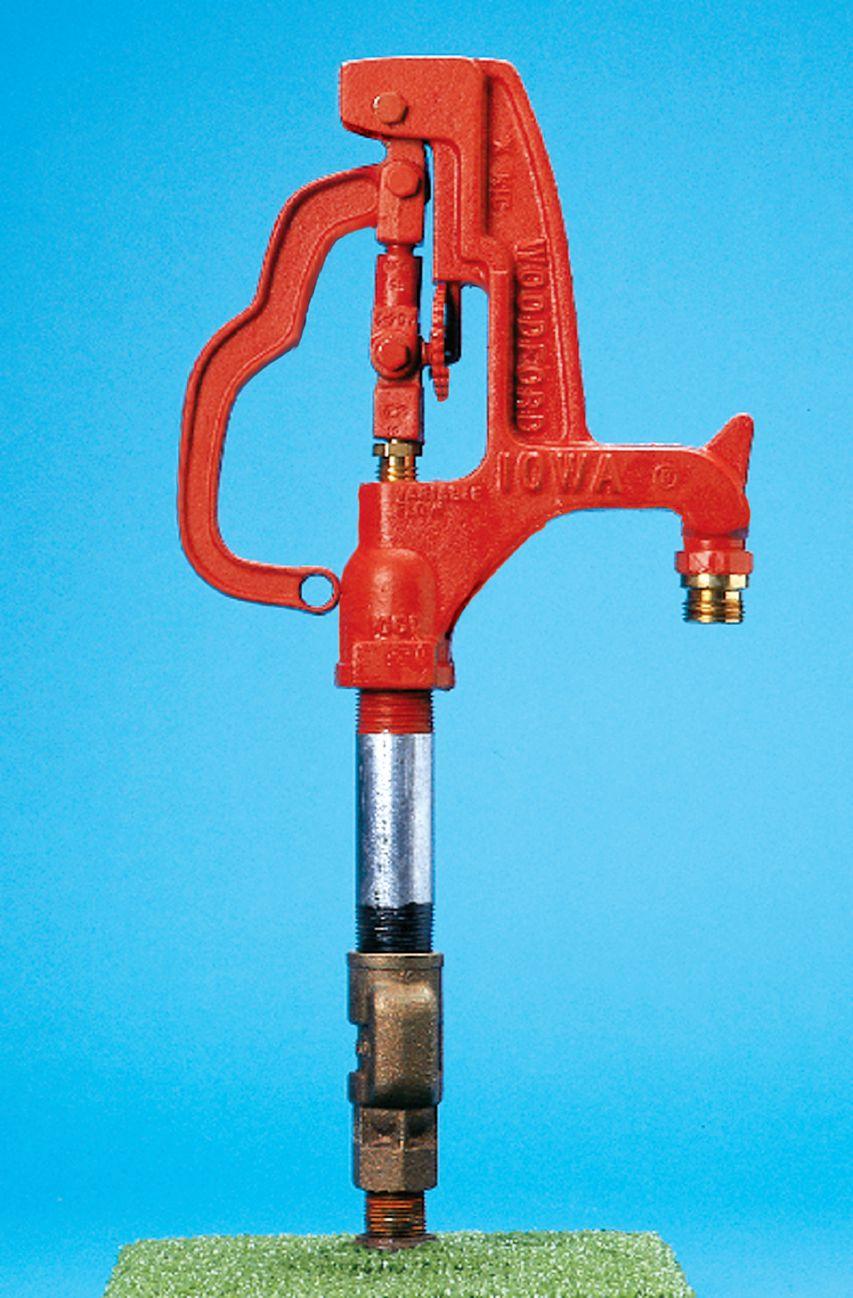
The original. Parts are always available even for the ones made 80 years ago. Includes an adjustable link for lever lock-in tension. A one piece, variable flow plunger has a large cushion type seal to assure shut off even when foreign particles are present. Repairs can be made with hydrant remaining in the ground.




